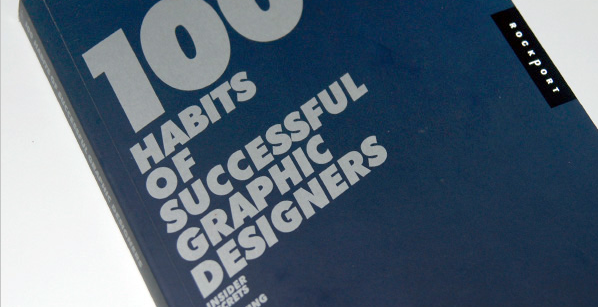8 habits of successful designers that I know
This is by no means a scientific list from formal studies. What I have written here is my impression from the list of designers whom I personally known. I observed their habits and what make them more successful in their career or business relative to others. Again, this is not meant to be a comprehensive list but something for you to reflect and think over for the coming year. I am sure there are other habits you guys have that I have not being able to observe or pinpoint. Please feel free to voice your opinion in the comments section.

Learn to listen
One of the most common mistake I see in new designers is they fail to listen to what clients really want. Design doesn’t exist in a vacuum. It needs to serve the bigger business goal or objective. If a designer design under his own assumptions without hearing what the others really want, it can lead to a failed design, no matter how pretty it is.
Articulate what people cannot
Beyond listening, a good designer also needs to articulate what he or she heard in a way that is clear to everyone. Most of the time, the clients are not 100% certain of what they want. A good designer can tease the important points and lay it out for everyone to have the same kind of understanding. This requires a lot of listening and the ability to see perspectives from other people’s shoes.
Prioritize goals of a design
A design can be meant to achieve more than one objective. A good designer needs to know which comes first so that the design can reflect the sense of priority for each goal. A design that has no priorities tend to be cramped with too much information or details, leading to a low user age or conversion rate.
Love to experiment
Good designers tend to push the boundaries of what they are comfortable with. They will create little playgrounds where they can try out new techniques or concepts that they just picked up. Usually, this can be their own website or small little design experiments. If you see a designer that hasn’t done much experiments, he or she is probably stagnant in his or her knowledge.
Read a lot from different areas
Related to the above point, a good designer tends to read widely for inspiration and ideas. Usually the best ideas come from cross pollination of different areas. A well read designer is armed with lots of weapons which he or she can choose as and when the situation calls for it.
Details detail details
Good designers are attentive to details. It is always the little things that separates a good from a great design. You will probably need to spend 80% of your effort to iron out these remaining 20% of the details. That is why most designs don’t finish well because designers skip this 80% part.
Learn from others
With the proliferation of design sharing sites such as Behance and Dribble, there is no excuse to not learn from the very best who is sharing their work and experiments with you for free. We can’t be good in everything so it makes senses to learn from others what we are weak in. The Internet has made this learning process much easier so we should take full advantage of it.
Manage time well
A good designer is also a good project manager. He or she knows how to hit the milestones and deliver results on time. Without proper management, you can spend hours on the design process and has nothing to show for it. Designing is not a random process. To produce concrete outcomes, you need to a process to manage your creative input and output.



Good guidelines for smooth working…..